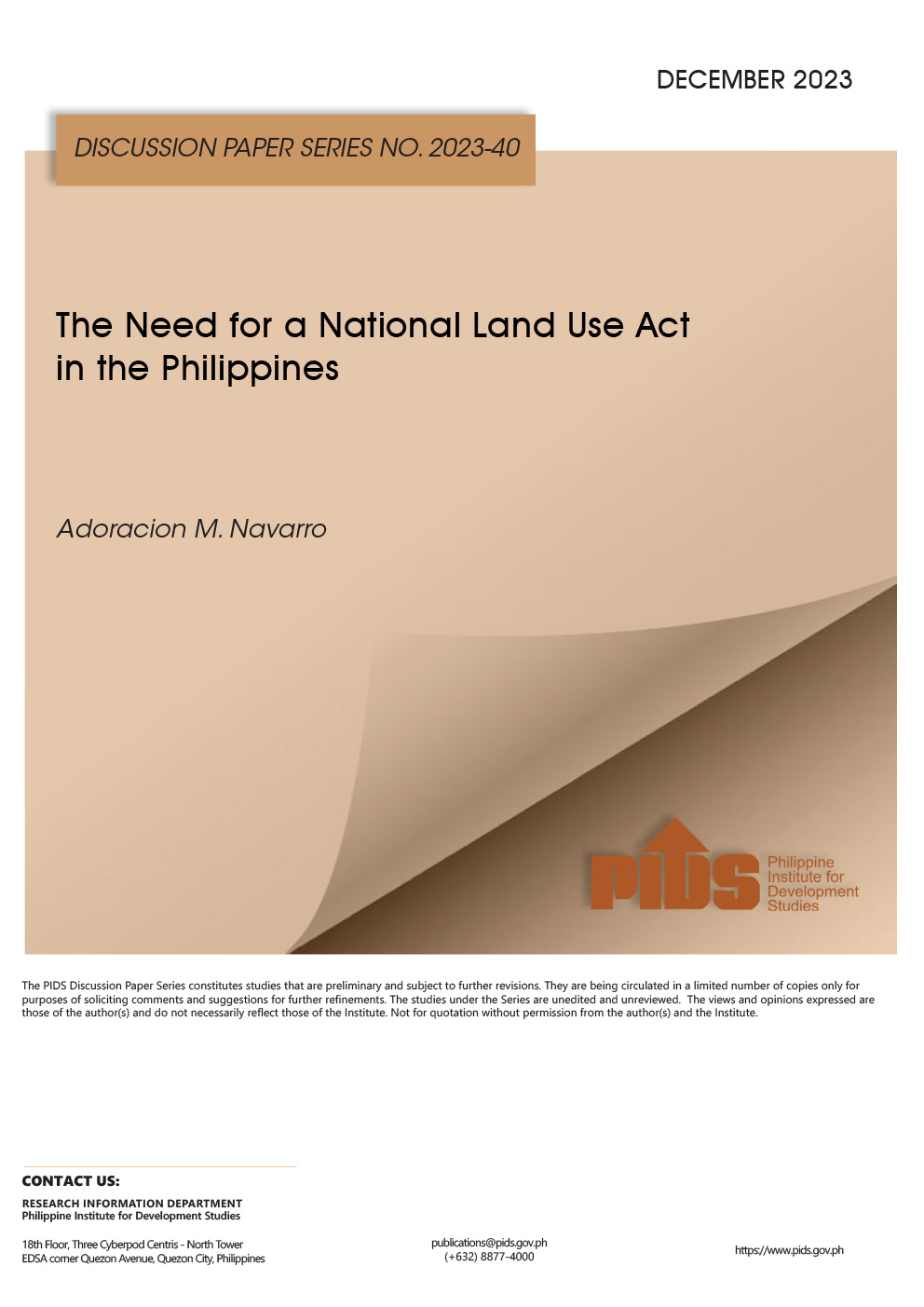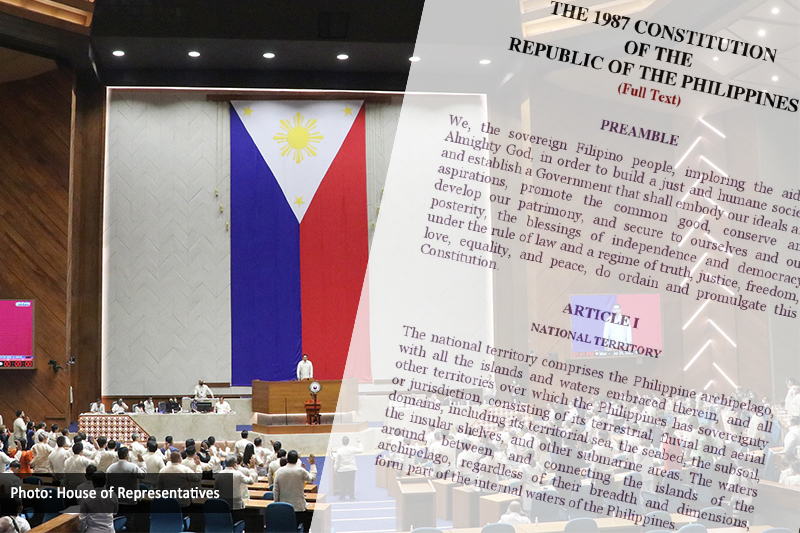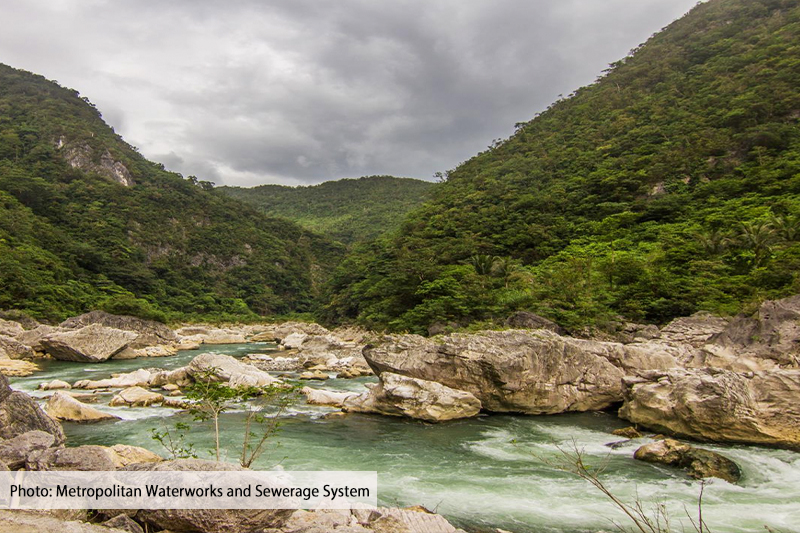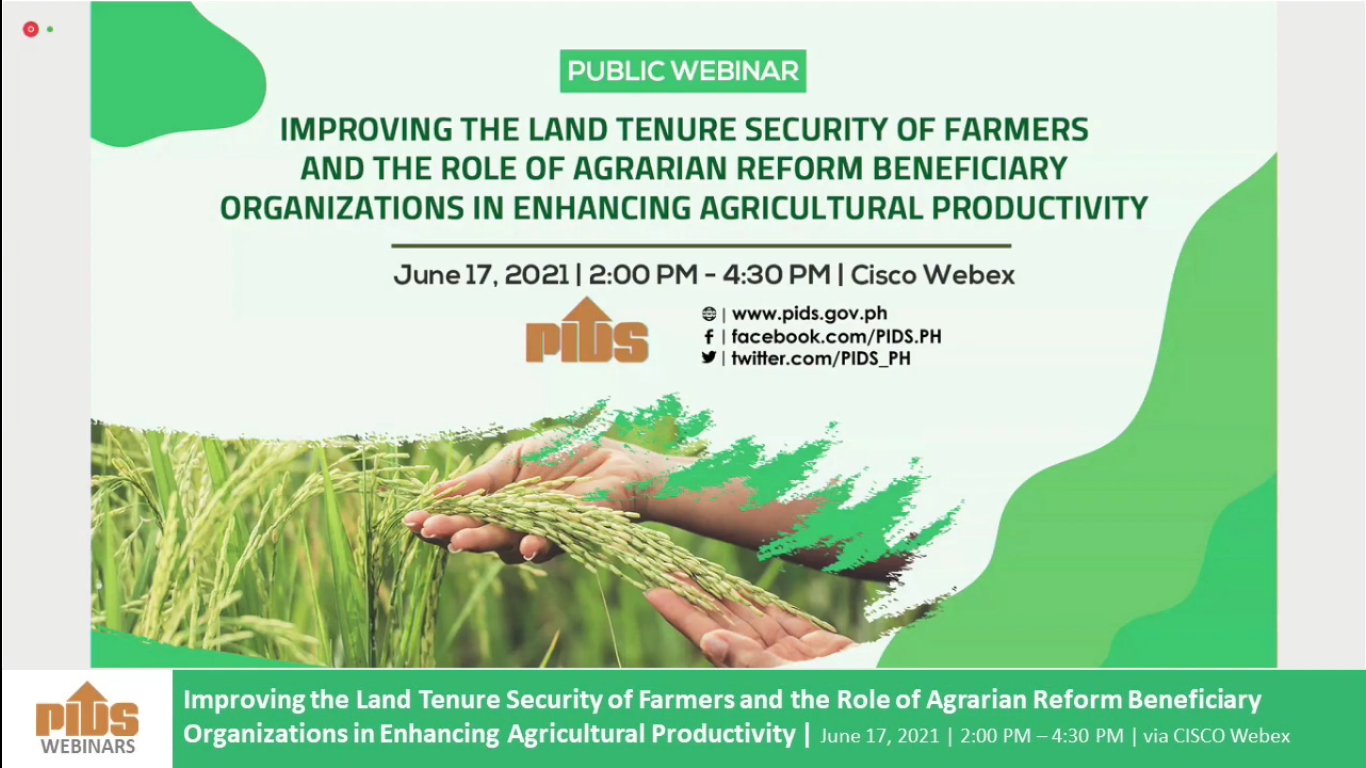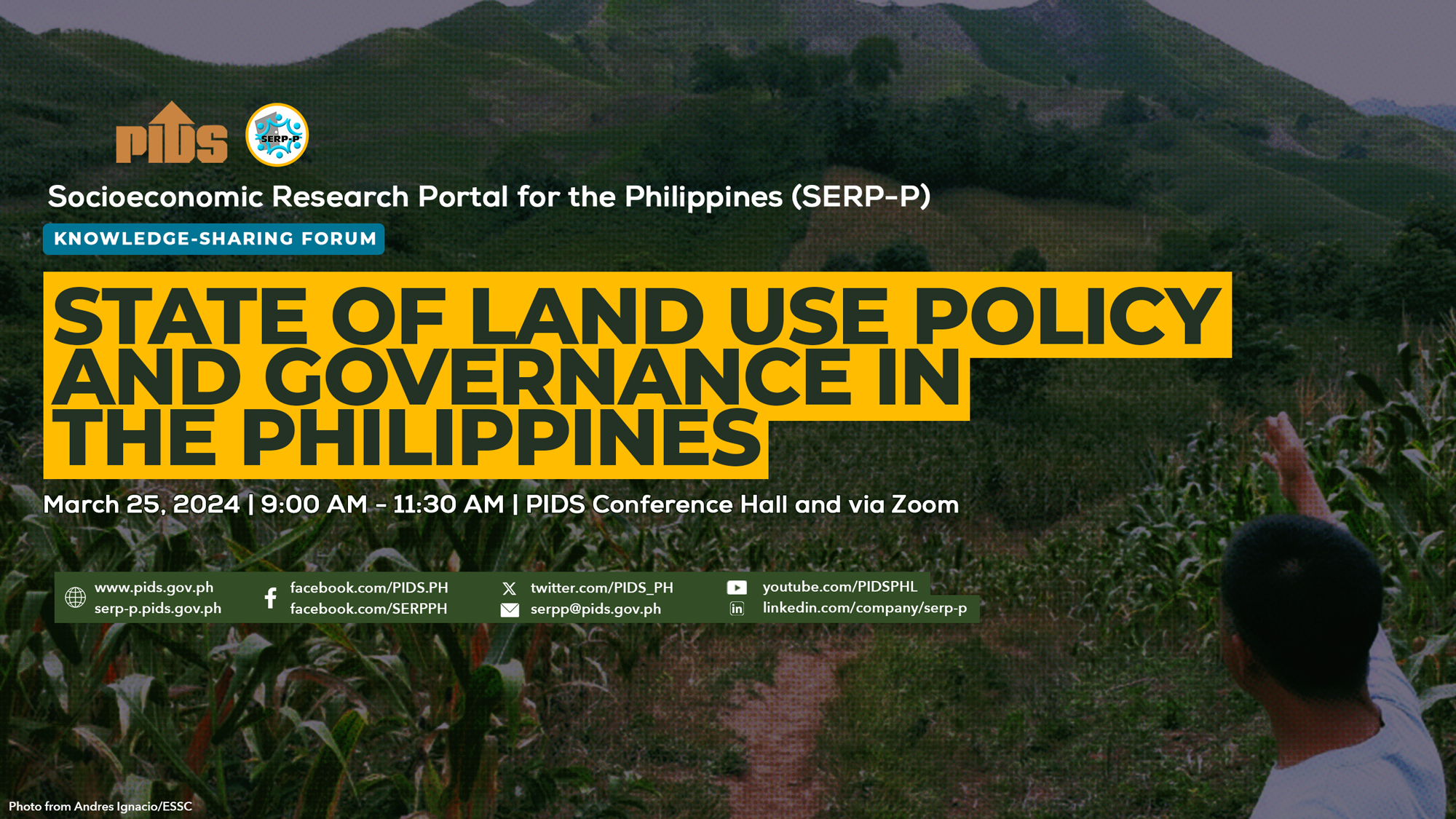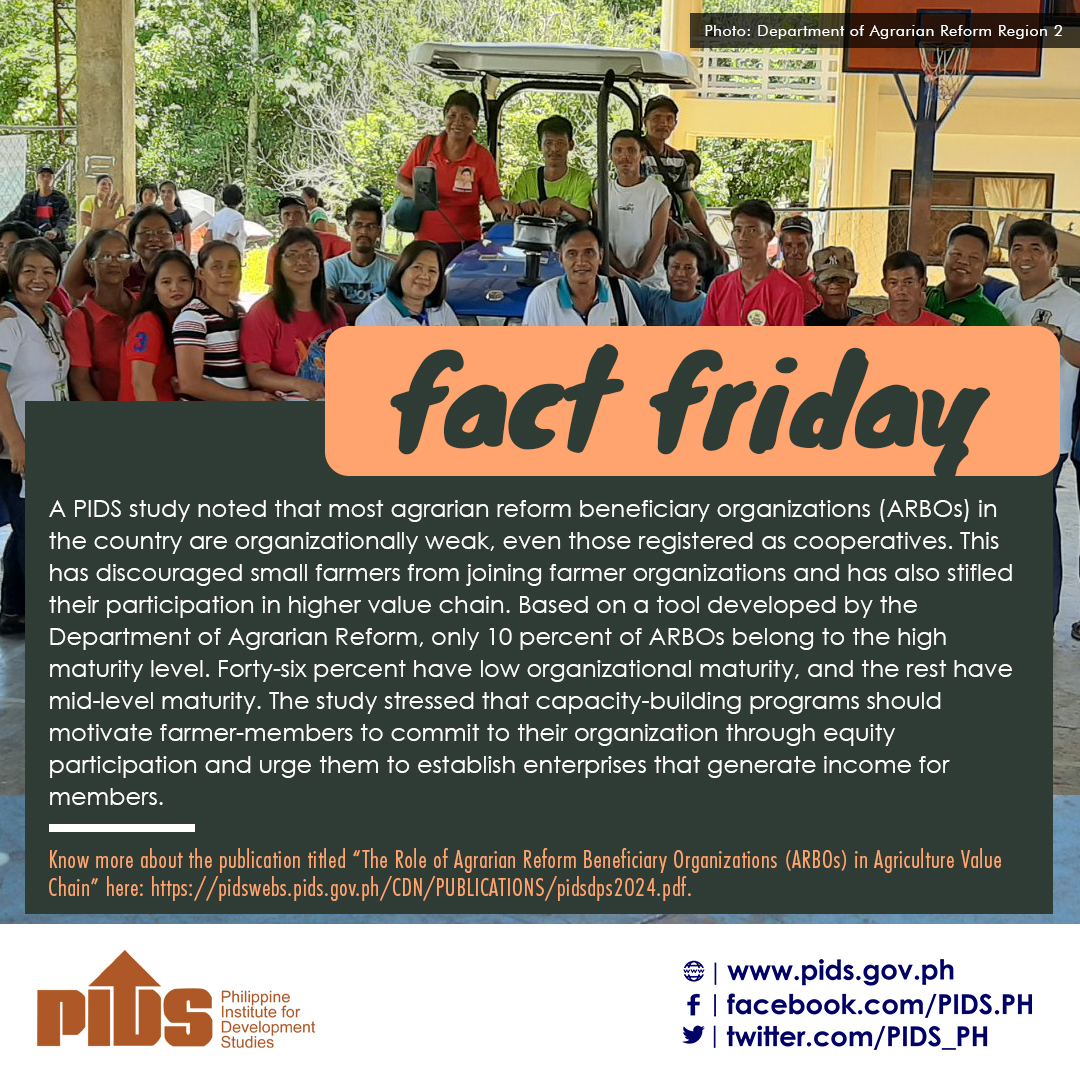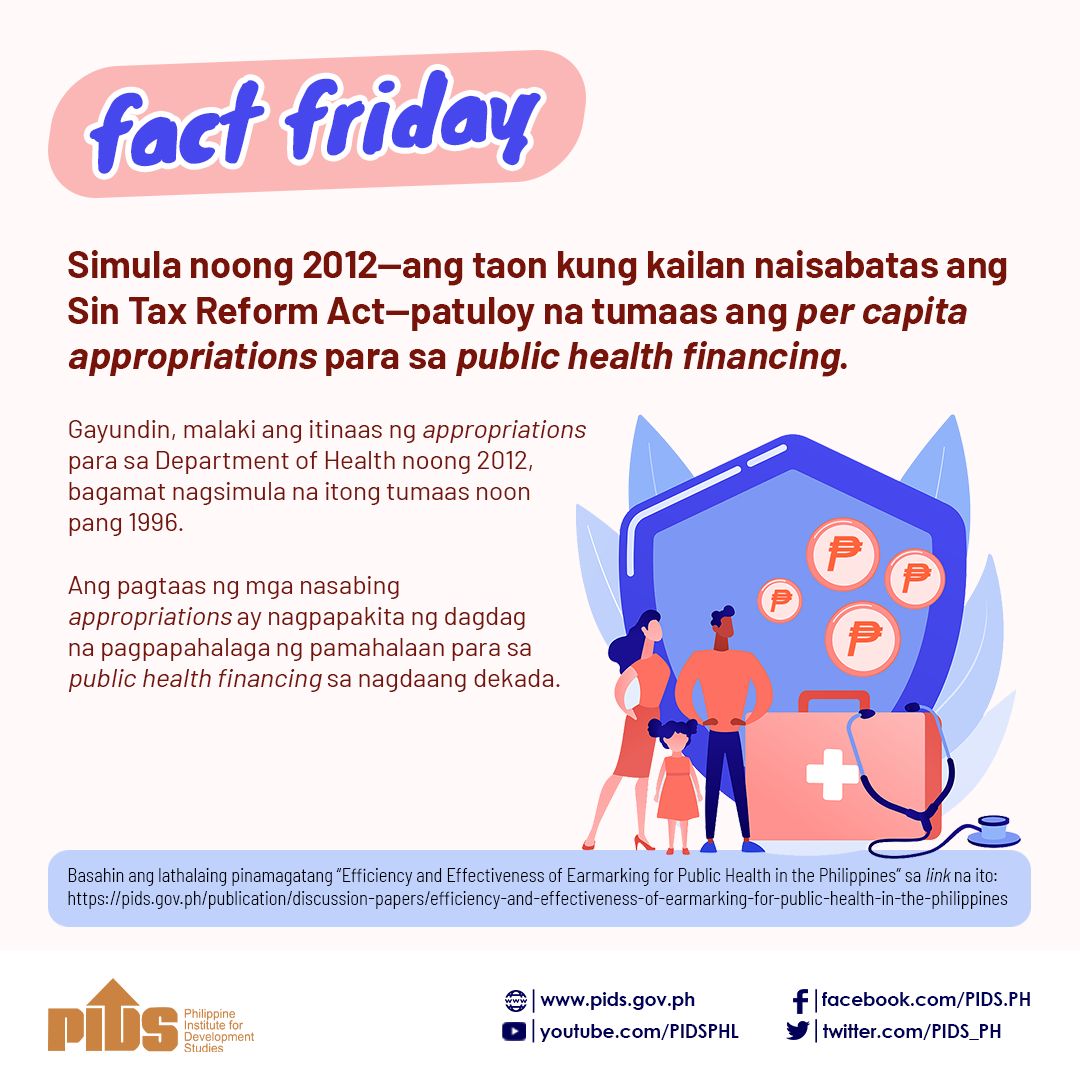Land reform land reform. Our land reform program has become so messy, so bad for agricultural productivity and economic growth, that it needs a land reform on top of the land reform. Moreover, because land reform in the Philippines took so long — more than 35 years — it has spawned second generation problems that it will take another land reform to undo. (I will explain a bit later.)
What are the first generation problems and what has been the result? One is the fragmentation of agricultural land. With a retention limit of five hectares, i.e. nobody allowed to own agricultural land beyond five hectares, the Comprehensive Agrarian Reform Program (CARP) land distribution, and death of the original farmer beneficiaries, the average land size of agricultural lands has been shrinking over time.
In 1985, the average farm size was 2.85 hectares. By 2002, the average size had dropped to 2.01 hectares. Today, the average size must have dropped even further. In Bohol, when I visited a few years ago, I was told the average farm size was less than a hectare.
The fragmentation has had deleterious effects on productivity. My fellow columnist, Dr. Raul Fabella, cited the excellent study by Tasso Adamopoulos and Diego Restuccia published in the prestigious National Bureau of Economic Research Journal (2019) on CARP titled “Land Reform and Productivity: Quantitative Analysis with Microdata.” It showed that due to CARP, the average farm size has been reduced by 34% while agricultural productivity fell 17%. CARP had a significant negative effect on farm productivity, labor productivity, and total factor productivity.
Therefore, our agricultural sector is lagging behind services and manufacturing. It cannot even grow above the population growth rate of 1.4%. The overall result: farmers remain poor (as Fabella described them, from poor peasants, farmer beneficiaries have become “impoverished landowners”), the country becomes more vulnerable to food price shocks and even more dependent on food imports. It’s not a comforting thought during this pandemic when food security has suddenly become important.
Do-gooders say that cooperatives are the solution to the fragmentation of lands. I’ve been hearing about this since time immemorial, but the solution obviously hasn’t worked, judging from our still backward productivity. It’s not hard to see why: the transaction costs for collective action are too high and without a market mechanism to settle differences (buy me out or I buy you out), farmers spend their time in politicking to control the cooperatives.
Neither will a Big Brother-Small Brother arrangement work with an agribusiness processing firm because the agribusiness processing firm must contend with the practice of “pole vaulting,” i.e. farmers not honoring their supply contracts and selling to a different buyer when they can get a better price elsewhere. The agribusiness firm must have the option to put up its own farm to assure its supply of raw materials. However, under the present CARP law, the firm can’t buy more than five hectares of agricultural land.
The solution, short of revoking the five hectare retention limit, is to allow farmer beneficiaries to lease their lands. As Adamopoulos and Restuccia state, “A well functioning rental market for land can substantially mitigate the negative effects of imposing a ceiling on land holdings as these markets would tend to disassociate land use from land rights.”
However, here’s the rub: farmer beneficiaries aren’t allowed to lease their lands until the debt amortizations with a 30-year repayment period have been fully paid and 10 years have elapsed after award of the CLOA (Certificate of Land Ownership Award).
According to a Philippine Institute of Development Studies (PIDS) study (2003), these restrictions reduce the value of the awarded land by: a.) eroding the collateral value of land, b.) lowering the value of contracted land, c.) reducing the farmer’s incentive to invest in land improvements, d.) constraining the transferability of land from less productive to more productive farmers, and e.) limiting the choice of more efficient contractual arrangements.
What’s the solution? Let the government condone the debt, as my friend and fellow columnist Dr. Raul Fabella said last week. Debt condonation is a social justice, economic stimulus, and productivity enhancing measure all at the same time.
It’s a social justice measure because the government degraded the value of the land when it imposed restrictions and yet demands payment for the full amount.
It’s an economic stimulus measure because if freed from debt, the farmers will spend more to increase the productivity of their farms.
It’s a productivity enhancing measure because it will enable land to be consolidated via lease into more productive farms.
Leasing will give farmers a safety net in the form of an annual rental income while allowing more productive farmers to use the land. This is what’s happening in China and Taiwan.
Leasing isn’t the first best solution. Lessees tend to over fertilize and downgrade the quality of the land since they don’t own it. However, it’s a good enough solution that satisfies both social justice and economic efficiency goals.
Debt condonation won’t lead to “moral hazard” because there won’t be another land reform program wherein landless peasants will similarly incur a debt from the government. It’s also the government that did injustice to the farmers by saddling them with debt and restrictions. In fact, debt condonation is the moral thing to do. Moreover, there’s an overarching public good that will be served by condonation.
Debt condonation won’t hurt the finances of government inasmuch as 75% of farmers actually aren’t paying their amortizations, although this is probably the government’s fault. Farmers are unable to increase the productivity of their land with the restrictions imposed on them so they are unable to pay.
Aside from the fragmentation of lands and the restrictions on CLOAs, there’s another huge problem bedeviling CARP: half of all CLOAs, mainly those that came from public lands, have a collective title. Without an instrument of individual ownership, farmers are saddled with “dead capital.” They can’t formally sell, lease, or mortgage their farmlands.
The government issued these CLOAs because the Department of Agrarian Reform (DAR) wanted to claim huge accomplishments without going through the tedious task of land survey and issuance of individual titles.
Fortunately, after 33 years, the government has recognized this problem. This year, the government borrowed $370 million from the World Bank for a project to parcelize the collective CLOAs under CARP. The project is called Support to Parcelization of Lands for Individual Titles (SPLIT).It’s expected to benefit 750,000 farmers.
However, when the program will be implemented and completed is still a big question mark.
The problems bedeviling CARP don’t stop at collective CLOAs and restrictions. Because CARP is the longest running land reform program in the world, from 1987 to 2014, or more than 30 years, a second generation problem has arisen. This problem is due to the fact that, as former Agrarian Reform Secretary Gil de los Reyes describes it, the authors of the CARP Law assumed that farmers don’t die. The CARP Law doesn’t have any provisions for succession. Therefore, when farmer beneficiaries die (and most probably have died since the CARP is over 30 years old), the law on succession under the Civil Code is followed. The heirs would have equal rights to the land. In most families, perhaps only one heir remains to till the land, if at all. (or none, as the heirs dispose of the land illegally in the informal market). The other family members would probably have moved to another site, or work overseas.
Therefore, imagine the problem for any transaction involving the land: all the heirs have to sign on the document. If the heirs are abroad, they would have to go to the nearest consulate to sign and notarize a special power of attorney. And this assumes that they can be contacted. That’s already a huge burden for heirs from middle class families. What more for poor farmers without access to the internet and good lawyers?
In a sense, these inherited farmlands have become mini-collective CLOAs, with multiple absent family members having ownership rights to the property. The original CARP was supposed to solve the problem of absentee landlords with a land to the tiller approach but because of time and death, absentee landowners have again become the norm. Therefore, we may need to land reform land reform.
Frankly, I don’t know the solution to this problem. In some countries, heirs lose their ownership or possessory rights if they don’t till the land. However, I understand this would require an amendment to the Civil Code, which is an almost impossible undertaking.
In the meantime, condone the debt, stimulate the economy, and free the farmer.
What are the first generation problems and what has been the result? One is the fragmentation of agricultural land. With a retention limit of five hectares, i.e. nobody allowed to own agricultural land beyond five hectares, the Comprehensive Agrarian Reform Program (CARP) land distribution, and death of the original farmer beneficiaries, the average land size of agricultural lands has been shrinking over time.
In 1985, the average farm size was 2.85 hectares. By 2002, the average size had dropped to 2.01 hectares. Today, the average size must have dropped even further. In Bohol, when I visited a few years ago, I was told the average farm size was less than a hectare.
The fragmentation has had deleterious effects on productivity. My fellow columnist, Dr. Raul Fabella, cited the excellent study by Tasso Adamopoulos and Diego Restuccia published in the prestigious National Bureau of Economic Research Journal (2019) on CARP titled “Land Reform and Productivity: Quantitative Analysis with Microdata.” It showed that due to CARP, the average farm size has been reduced by 34% while agricultural productivity fell 17%. CARP had a significant negative effect on farm productivity, labor productivity, and total factor productivity.
Therefore, our agricultural sector is lagging behind services and manufacturing. It cannot even grow above the population growth rate of 1.4%. The overall result: farmers remain poor (as Fabella described them, from poor peasants, farmer beneficiaries have become “impoverished landowners”), the country becomes more vulnerable to food price shocks and even more dependent on food imports. It’s not a comforting thought during this pandemic when food security has suddenly become important.
Do-gooders say that cooperatives are the solution to the fragmentation of lands. I’ve been hearing about this since time immemorial, but the solution obviously hasn’t worked, judging from our still backward productivity. It’s not hard to see why: the transaction costs for collective action are too high and without a market mechanism to settle differences (buy me out or I buy you out), farmers spend their time in politicking to control the cooperatives.
Neither will a Big Brother-Small Brother arrangement work with an agribusiness processing firm because the agribusiness processing firm must contend with the practice of “pole vaulting,” i.e. farmers not honoring their supply contracts and selling to a different buyer when they can get a better price elsewhere. The agribusiness firm must have the option to put up its own farm to assure its supply of raw materials. However, under the present CARP law, the firm can’t buy more than five hectares of agricultural land.
The solution, short of revoking the five hectare retention limit, is to allow farmer beneficiaries to lease their lands. As Adamopoulos and Restuccia state, “A well functioning rental market for land can substantially mitigate the negative effects of imposing a ceiling on land holdings as these markets would tend to disassociate land use from land rights.”
However, here’s the rub: farmer beneficiaries aren’t allowed to lease their lands until the debt amortizations with a 30-year repayment period have been fully paid and 10 years have elapsed after award of the CLOA (Certificate of Land Ownership Award).
According to a Philippine Institute of Development Studies (PIDS) study (2003), these restrictions reduce the value of the awarded land by: a.) eroding the collateral value of land, b.) lowering the value of contracted land, c.) reducing the farmer’s incentive to invest in land improvements, d.) constraining the transferability of land from less productive to more productive farmers, and e.) limiting the choice of more efficient contractual arrangements.
What’s the solution? Let the government condone the debt, as my friend and fellow columnist Dr. Raul Fabella said last week. Debt condonation is a social justice, economic stimulus, and productivity enhancing measure all at the same time.
It’s a social justice measure because the government degraded the value of the land when it imposed restrictions and yet demands payment for the full amount.
It’s an economic stimulus measure because if freed from debt, the farmers will spend more to increase the productivity of their farms.
It’s a productivity enhancing measure because it will enable land to be consolidated via lease into more productive farms.
Leasing will give farmers a safety net in the form of an annual rental income while allowing more productive farmers to use the land. This is what’s happening in China and Taiwan.
Leasing isn’t the first best solution. Lessees tend to over fertilize and downgrade the quality of the land since they don’t own it. However, it’s a good enough solution that satisfies both social justice and economic efficiency goals.
Debt condonation won’t lead to “moral hazard” because there won’t be another land reform program wherein landless peasants will similarly incur a debt from the government. It’s also the government that did injustice to the farmers by saddling them with debt and restrictions. In fact, debt condonation is the moral thing to do. Moreover, there’s an overarching public good that will be served by condonation.
Debt condonation won’t hurt the finances of government inasmuch as 75% of farmers actually aren’t paying their amortizations, although this is probably the government’s fault. Farmers are unable to increase the productivity of their land with the restrictions imposed on them so they are unable to pay.
Aside from the fragmentation of lands and the restrictions on CLOAs, there’s another huge problem bedeviling CARP: half of all CLOAs, mainly those that came from public lands, have a collective title. Without an instrument of individual ownership, farmers are saddled with “dead capital.” They can’t formally sell, lease, or mortgage their farmlands.
The government issued these CLOAs because the Department of Agrarian Reform (DAR) wanted to claim huge accomplishments without going through the tedious task of land survey and issuance of individual titles.
Fortunately, after 33 years, the government has recognized this problem. This year, the government borrowed $370 million from the World Bank for a project to parcelize the collective CLOAs under CARP. The project is called Support to Parcelization of Lands for Individual Titles (SPLIT).It’s expected to benefit 750,000 farmers.
However, when the program will be implemented and completed is still a big question mark.
The problems bedeviling CARP don’t stop at collective CLOAs and restrictions. Because CARP is the longest running land reform program in the world, from 1987 to 2014, or more than 30 years, a second generation problem has arisen. This problem is due to the fact that, as former Agrarian Reform Secretary Gil de los Reyes describes it, the authors of the CARP Law assumed that farmers don’t die. The CARP Law doesn’t have any provisions for succession. Therefore, when farmer beneficiaries die (and most probably have died since the CARP is over 30 years old), the law on succession under the Civil Code is followed. The heirs would have equal rights to the land. In most families, perhaps only one heir remains to till the land, if at all. (or none, as the heirs dispose of the land illegally in the informal market). The other family members would probably have moved to another site, or work overseas.
Therefore, imagine the problem for any transaction involving the land: all the heirs have to sign on the document. If the heirs are abroad, they would have to go to the nearest consulate to sign and notarize a special power of attorney. And this assumes that they can be contacted. That’s already a huge burden for heirs from middle class families. What more for poor farmers without access to the internet and good lawyers?
In a sense, these inherited farmlands have become mini-collective CLOAs, with multiple absent family members having ownership rights to the property. The original CARP was supposed to solve the problem of absentee landlords with a land to the tiller approach but because of time and death, absentee landowners have again become the norm. Therefore, we may need to land reform land reform.
Frankly, I don’t know the solution to this problem. In some countries, heirs lose their ownership or possessory rights if they don’t till the land. However, I understand this would require an amendment to the Civil Code, which is an almost impossible undertaking.
In the meantime, condone the debt, stimulate the economy, and free the farmer.

